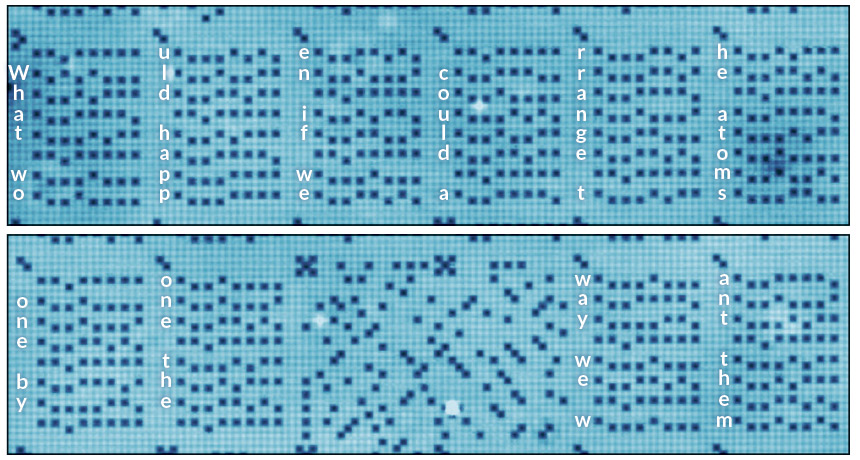Supersmall device uses individual atoms to store data
Blocks and rows of chlorine atoms encode words

ATOMIC CODE Scientists manipulated chlorine atoms on a supersmall device to store an excerpt from a 1959 Richard Feynman lecture (a portion shown above with each letter translated).
TU Delft